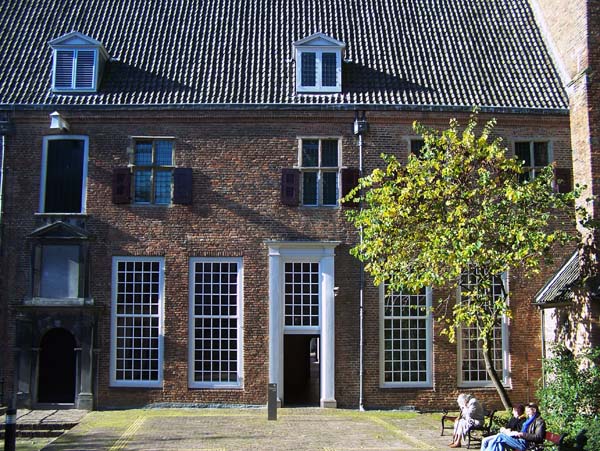Christianity Art Museum, Utrecht
The best Dutch collection, Roman Catholicism to Calvinism, exhibited in a former nun’s convent: the Catharijneconvent Museum
Utrecht is the key religious center of Catholicism in the Netherlands, and it still is the seat of the Roman Catholic archbishop.
Right in the old center of Utrecht, we find the large Cathedral / Duomo (Dom) with its 110 meter high tower – and close by, on a beautiful tranquil canal, we find the most important museum of Christianity in the Netherlands. Named Catharijne convent, it exhibits objects from various religious branches in well designed spacious galleries. This museum has re-opend. Please book a time slot ticket for yourself and for the guide. New: Private Audio system available.
This museum is unique in that it combines all christian movements and branches of faith under one roof – as a show of visual riches and pluriformity. It has the nations’s best Mediaeval collection.
As a guide, I am well informed about the branches of Christianity shown here.
During many ages, different Christian groups like Roman Catholics and Protestants fought like cats and dogs, and were even completely separated socially in terms of church, school, political party, radio station, newspaper. This ‘apartheid’ was called Pillarization, or Verzuiling. As a boy growing up in the 1950s and 1960s I still lived in that segregated world. By contrast, this museum shows an ecumenical spirit.
Roman Catholic faith and the Old Catholic faiths have yielded most resplendent objects as these faith are very visually oriented. There has also been a rich Catholic religious life which had to go practically underground between the 1570s and 1850.
Dutch Reformed faith is mostly a bible-centered faith and therefore has less dramatic objects to show, visually, buth faith is strong: Solo Fides, Grace by Faith Only.

Catharijneconvent Utrecht, Dijon ca 1420, sculptor Claus de Werve?, detail.
Petrus, detail of a statue of around 1410, now in Catharijneconvent Utrecht. The maker, sculptor Claus de Werve followed his uncle, the famous Claus Sluter at the Burgundy court in Dijon. This sculpture still has its colour. Most oak sculptures were stripped to blank oak in the 19th century to make them marketable.
After the 1960, the attendance in churches on Sunday morning has dramatically decreased in The Netherlands.





